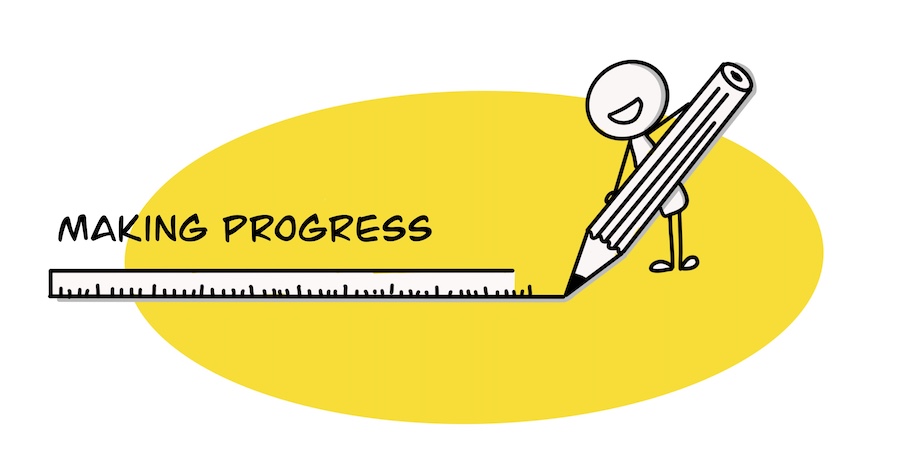Five tips to make progress

Were you super excited and full of good intentions to apply what you learned in practice at work after attending the training? Then you belong to the group of about 99% of our former participants who found the training very inspiring and valuable. Unfortunately, we also hear that participants find it difficult to make enough progress so that drawing can effortlessly and naturally become part of communication with clients/customers and colleagues. We would like to give you some tips on how to approach this.
1. Challenge your colleagues
Looking for a practical and applicable symbol?! Just hang a flipchart in the office, write the word you want to visualize at the top, and stick sticky notes on the flipchart so that everyone can easily draw their version of the symbol! This way, you inspire yourself and challenge your colleagues to keep drawing actively!
2. Choose your moments
Don’t put too much pressure on yourself. Don’t force yourself to visualize complete coaching conversations from day one. Take small steps and choose “safe” moments. Keep it fun for yourself as well. Practice symbols outside of customer or client conversations, practice first during meetings or conversations with colleagues. Keep it simple and gradually expand your visual library.
3. Three times a day
Draw three symbols every day. Take a maximum of one and a half minutes each time. Make it a game with your colleagues. Draw the three symbols of the day for each other.
4. Share your templates
You probably regularly follow standardized procedures, protocols, and action plans at work. Your colleagues most likely follow the same routine in their work as you do! It’s unnecessary for everyone to reinvent the wheel! Inspire each other and for example, add an agenda item for “templates” during meetings. Share the visual templates that have been created or even assign someone each time to develop a commonly used protocol into a valuable and applicable visual template for everyone.
5. Practice makes perfect
Remember, it’s not a beauty contest! The message is more important than the aesthetic image. Do you remember the blog we wrote earlier this year about how moved we were by the story of a care provider!? In this blog, you can see what we mean: the image should support the message, the drawings don’t have to be beautiful… they speak for themselves! Less is often more, and the more you practice, the larger your visual library becomes!
Have fun drawing!!
Draw your message teaches you how to increase the impact of your communication with expressive and simple drawings, you can visually convey what you want to communicate. This method is known as business drawing or visual communication. Take a business drawing training or workshop to learn how to say more than a thousand words with one picture. If you prefer books, Have a look at our book on Business drawing: Conversations visualized.
